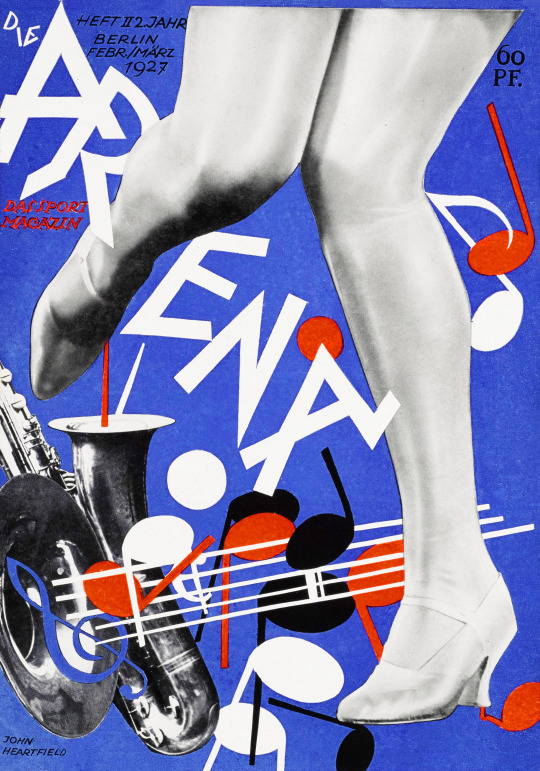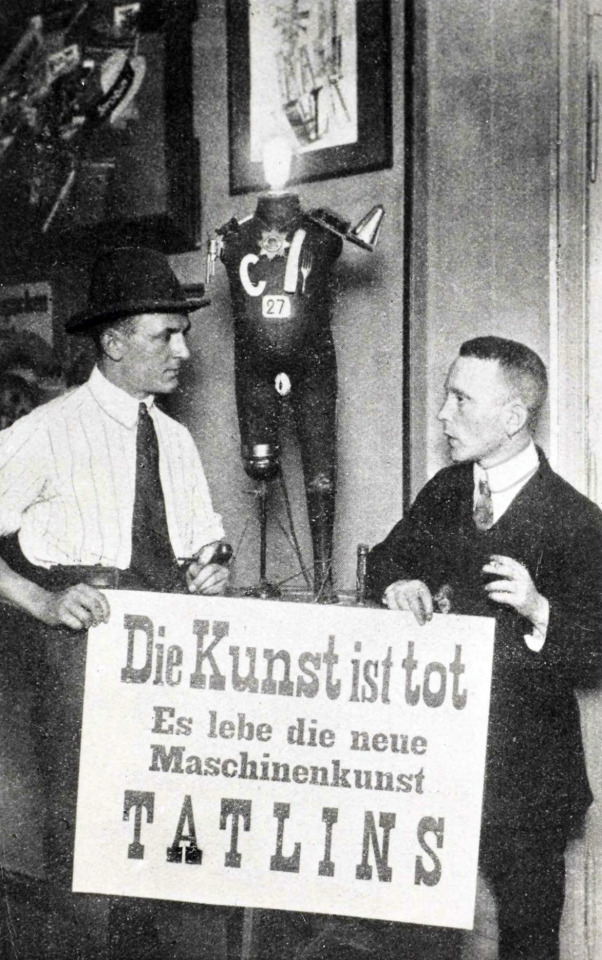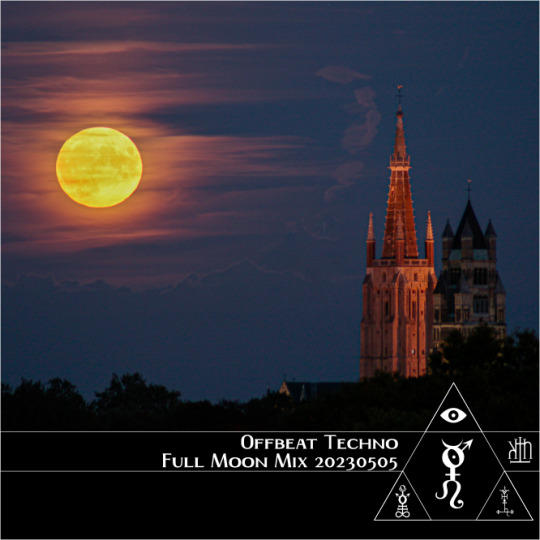#John Heartfield Artist
Explore tagged Tumblr posts
Text




THE ART OF PEACE -- THE FACE OF ANTI-WAR -- "NEVER, NEVER, NEVER AGAIN!"
PIC(S) INFO: Spotlight on anti-war/anti-fascist politically-charged works of German visual artist John Heartfield, titled "The Spirit of Geneva" (1932) and “Niemals wieder!” (translation: "Never Again!"), c. 1939.
MINI-OVERVIEW: "Historically the best anti-war imagery in my view was from John Heartfield (1891 -1968). He was a German artist who back in the day was probably amongst the first to use of art as a political weapon. Some of his most famous photomontages were anti-Nazi and anti-fascist. Calvin almost exclusively used his artwork on subsequent singles and albums. I think it is important that people are aware of that, as I have read in in a few articles that they think that Calvin made the artwork himself. (After I did the single covers for Discharge, I taught Calvin Morris how to prepare artwork for printing, at the printmaking studio at my college)."
-- MARTIN H. (former DISCHARGE graphic artist), to NEGATIVE INSIGHT, "DISCHARGE: The Untold Story Behind Their Iconic Minimalist Aesthetic," published c. February 2020
Sources: www.negativeinsight.com/niblog/discharge-the-untold-story-behind-their-iconic-minimalistic-aesthetic & Picuki.
#DISCHARGE#DISCHARGE 1981#Never Again#DISCHARGE Never Again 1981#John Heartfield#Never Again 1981#1981#80s punk#1930s#John Heartfield Artist#John Heartfield Art#Nuke Wave#The Spirit of Geneva#Real punk#Clay Records#80s hardcore punk#Punk rock#German Artist#German Art#Graphic Art#Sleeve Art#Agit-prop#Noise Not Music!#Hardcore punk#80s hardcore#Visual Artist#English punk#British punk#1932#UK punk
1 note
·
View note
Text

John Heartfield (1891–1968), ''Die Arena'', #2, Feb.-March, 1927 Source
#john heartfield#german artists#graphic artists#die arena#magazine covers#dancing#jazz#Roaring '20s#the roaring twenties
51 notes
·
View notes
Text

Uncredited Photographer Die Kunst ist Tot: Leftist Dada Artists George Grosz and John Heartfield Holding a Sign that Reads "Die Kunst ist Tot - Es lebe die neue Maschinenkunst Tatlins" (Art is Dead, Long the New Machineart of Tatlin), First International Dada Fair, Berlin 1920
87 notes
·
View notes
Text

Working in Germany between the two world wars, John Heartfield (born Helmut Herzfeld, 1891&;1968) developed an innovative method of appropriating and reusing photographs to powerful political effect. As a pioneer of modern photomontage, he sliced up mass media photos with his iconic scissors and then reassembled the fragments into compositions that utterly transformed the meaning of the originals. In John Heartfield and the Agitated Image, Andrés Mario Zervigón explores this crucial period in the life and work of a brilliant, radical artist whose desire to disclose the truth obscured by the mainstream press and imperial propaganda made him a de facto prosecutor of Germany&;s visual culture. Zervigón charts the evolution of Heartfield&;s photomontage from an act of antiwar resistance into a formalized and widely disseminated political art in the Weimar Republic. Appearing on everything from campaign posters to book covers, the photomonteur&;s notorious pictures challenged well-worn assumption and correspondingly walked a dangerous tightrope over the political, social, and cultural cauldron that was interwar Germany.
John Heartfield and the Agitated Image: Photography, Persuasion, and the Rise of Avant-Garde Photomontage : Free Download, Borrow, and Streaming : Internet Archive
6 notes
·
View notes
Text

COLLAGE ON VIEW
Cut Out
at Beyond Baroque in Venice, California, USA through 27 July 2024. “Cut Out” is an exhibition of collages made by cutting and pasting found materials. While digital collaging has become commonplace, this exhibition focuses on analogue processes and features work by 11 Los Angeles-area collagists. Their inspiration comes from collagists including Hannah Höch, Picasso, Georges Braque, John Heartfield, and El Lissitzky. Read More
*****************************
Kolaj Magazine, a full color, print magazine, exists to show how the world of collage is rich, layered, and thick with complexity. By remixing history and culture, collage artists forge new thinking. To understand collage is to reshape one's thinking of art history and redefine the canon of visual culture that informs the present.
SUBSCRIBE | CURRENT ISSUE | GET A COPY
SIGN UP TO GET EMAILS
5 notes
·
View notes
Text
Andres M. Zervigon on Illustrated Magazines
I first came across Andrés Mario Zervigón’s (Cuban) name while researching a magazine that filled me with awe the first time I saw it.
AIZ, the Arbeiter-Illustrierte-Zeitung (Workers Illustrated Magazine) is an illustrated, mass circulation German periodical that was published in Berlin during the 1920s and 1930s (in Prague after 1933). It contains some of the most emotionally charged imagery I’ve ever seen. The best work was by John Heartfield.
Zervigón is professor of the history of photography at Rutgers University in New Jersey. He obtained his PhD from Harvard University in 2000 and concentrates his scholarship “on the interaction between photographs, film, and fine art." His first book, John Heartfield and the Agitated Image: Photography, Persuasion, and the Rise of Avant-Garde Photomontage (University of Chicago Press, 2012), proposes that “photography’s sudden ubiquity in illustrated magazines, postcards, and posters produced an unsettling transformation of visual culture that artists felt compelled to address.”
Zervigón’s work, says the Rutger’s website, “generally focuses upon moments in history when these media [film, photography, fine art] prove inadequate to their presumed task of representing the visual.”
We start our conversation by unpacking this passage, and then move on to a short history of illustrated, mass circulation magazines, (including VU magazine), then to the life of John Heartfield, and finally to AIZ.
Background here
Check out this episode!
0 notes
Text
Jhon heartfield
John Heartfield (born Helmut Herzfeld, 1891–1968) was a German visual artist and one of the pioneers of political photomontage. He is best known for his sharp anti-fascist and anti-Nazi art, which he created during the rise of Adolf Hitler and the Third Reich. Heartfield’s works were critical of Nazi propaganda and German militarism, using photomontage to create powerful, satirical images that conveyed his political messages.
Heartfield fled Germany in 1933 when the Nazis came to power, relocating first to Czechoslovakia and later to England. After World War II, he returned to East Germany and continued his work until his death in 1968. His politically charged art remains influential and is considered groundbreaking for its use of photomontage to deliver a strong ideological critique.
0 notes
Text
John Heartfield (1891-1968)
John Heartfield (1891-1968) était un photographe, peintre allemand, illustrateur de livres (Upton Sinclair) juif renommé pour ses photomontages (couvertures, illustrations de livres) dadaïstes. Artiste communiste, il a consacré une partie importante de son travail à créer des affiches et tracts fustigeant la montée du nazisme et illustre, dès 1930, les couvertures du journal ouvrier…
0 notes
Text
Lance Hansen
https://www.podbean.com/media/share/pb-enmkb-15863cb Mad magazine & American Bystander cartoonist Lance Hansen joins Geoff to talk about his new book, “Limerature 101: Literary Classics in Five Lines or Less(with Pictures)” as well as upcoming projects, including a biography of collagist/dada artist, John Heartfield. Check out Lance Hansen…
View On WordPress
0 notes
Text

Hey everyone, a new full moon a new show! I'm back with a new set filled with some of my favorite offbeat #techno tracks. I'm taking things dark'n'raw so if you're a fan of the gritty and intense side of techno, this one's for you.
I know I usually do a live stream when the moon is full, but to be honest, I'm just too busy (and maybe a little bit lazy) to set everything up. But that's okay, because I'm still bringing the heat with this pre-recorded mix. Trust me, the energy is still there, and you won't want to miss it.
I'm always eager to hear your thoughts and feedback on the show and the tracks I've selected. If you enjoy what you hear, please share it with your fellow techno fans and help keep this Kult thriving. Let's connect and continue to explore the exciting and innovative world of music together.
Original artwork: -
I'd like to thank my Patreons who supported this show: Dafreeze, Strayd0g & R. Relique.
If you also want to support The Kult of O, and get more content, then consider becoming a Patreon:
Slyrs - End 9N9U9E9V9E9 - CRISTALES ROTOS Vadz - Unstable Ingen - Snap The Tilt (Blackmass Plastics Remix) Catartsis - Press 11xxx27 - Drunk with tears (Raffaele Attanasio SCMC remix) Dominik Müller - Wajcha 6SISS - Absence Of Obvious Harmony Ah Cama-Sotz - Hing JASSASS - Sickdose Rory St John - 13Bullet Taro Division - WHRV010 Simon Heartfield - Magnetron Thomas P. Heckmann - Himmel & Hölle (Codex Empire remix) Reqh - Balance BION-X - The Misunderstood 2 Karkasas - Industrial Tragedy Club LNA - Veils d_b (Déformation Booléenne) - Divinum Baphomet (Codex Empire Remix)
Blog https://www.thekultofo.com/offbeat-techno-mix/
1 note
·
View note
Text
Artist Research - Raoul Hausmann

Life -
Raoul Hausmann, (born July 12, 1886, Vienna, Austria—died February 1, 1971, Limoges, France), Austrian artist, a founder and central figure of the Dada movement in Berlin, who was known especially for his satirical photomontages and his provocative writing on art.
Hausmann was first exposed to art through his father, the painter and professional conservator Victor Hausmann. The family moved to Berlin in 1900, and in 1908 Hausmann began his formal training at Arthur Lewin-Funcke’s Atelier for Painting and Sculpture, where he focused on anatomy and nude drawing. Upon finishing at the atelier, Hausmann connected with the German Expressionist painters—in particular, Ludwig Meidner and Erich Heckel. He studied lithography and woodcutting under Heckel. He also began what would become a lifelong writing career, penning articles that decried the art establishment for journals such as Die Aktion and Herwarth Walden’s Der Sturm.
Hausmann was engaged in and loyal to Expressionism until 1917, when he met Richard Hülsenbeck, who introduced him to the principles and philosophy of Dada, a new visual and literary art movement that had already taken off in other cities in Europe. Dada artists and writers created provocative works that questioned capitalism and conformity, which they believed to be the fundamental motivations for the war that had just ended and left chaos and destruction in its wake. Along with Hülsenbeck, George Grosz, John Heartfield, Johannes Baader, and Wieland Herzfelde, Hausmann founded the Berlin Dada Club and, with Hülsenbeck, wrote a manifesto claiming that Dada was the first art movement that “no longer confront[ed] life aesthetically.” Hausmann also wrote a manifesto titled “The New Material in Painting,” in which he demanded an alternative to traditional oil paint. He later published the piece as Synthetisches Cino der Malerei (“Synthetic Cinema of Painting”). Both the anti-art Dada manifesto and Hausmann’s declaration on new media were recited before a riotous audience at the first event of the Berlin Dada Club, on April 12, 1918. The artists’ evening of performance and readings was staged at a meeting of the Berlin Sezession, a breakaway group of artists, including Lovis Corinth and Max Liebermann, still very much devoted to traditional art forms.

Work -
By 1918 Hausmann had already begun to work primarily in photomontage—composite collaged images made by juxtaposing and superimposing fragments of photos and text found in mass-media sources.
Between 1918 and 1920 Hausmann was also busy inventing other anti-art art forms, such as “optophonetic” and “poster” poems, both of which were made up of random letters strung together. The former were meant to be performed or read aloud; the latter were visual poems created as collages of typography. Two of his best-known works of this type are the poster poem OFFEAHBDC and the optophonetic poem OFFEAH (both 1918). Hausmann also created, as an offshoot of the collage and photomontage, assemblages of found materials, including arguably his most famous work, Mechanical Head: Spirit of Our Age (1919–20), a hairdresser’s wig dummy adorned with a tape measure, a wooden ruler, a tin cup, a spectacles case, a piece of metal, parts of a pocket watch, and pieces of a camera.
His photographs consist primarily of nudes, landscapes, and portraits. He also continued to write and publish regularly, sometimes in relation to his theories about the uses and possibilities of photography
Spain, in 1933. While in Spain Hausmann wrote about and photographed the country’s indigenous architecture and published his work in several French-language journals, including Oeuvres and Revue anthropologique. During that period, as a result of his ongoing research and interest in the relationship between the audible and the visual, he invented the “optophone,” a mechanism by which to convert visible forms into sound, for which he got a patent in 1935. At the outbreak of the Spanish Civil War in 1936, Hausmann and Mankiewitz left Spain, first stopping in Zürich and then going to Prague and Paris. Between the onset of World War II (1939) and the Allied invasion of France (1944), they lived in hiding in Peyrat-le-Château, France. They settled in Limoges in late 1944
In the late 1940s and the 1950s, Hausmann continued to pursue photography, exhibited often, and published articles on photography in journals such as A bis Z and Camera. He also published writings on his recollections of Dada, including an autobiographical volume called Courier Dada (1958). During that period and through the last two decades of his life, in addition to engaging in photography, he created photograms, recorded sound poetry, and returned to oil painting. His final piece of writing, Am Anfang war Dada (“At the Beginning Was Dada”), was published posthumously in 1972.
1 note
·
View note
Text
Hermynia Zur Mühlen (1883–1951), one of the twentieth century’s great political writers, was not seemingly destined for a revolutionary, unconventional literary career. Born in Vienna to an aristocratic Catholic family, Zur Mühlen married an Estonian count. But she rebelled, leaving her upper-class life to be with the Hungarian writer and Communist Stefan Klein, and supporting herself through translations and publications. Altogether, Zur Mühlen wrote thirty novels, mysteries, and story collections, and translated around 150 works, including those of Upton Sinclair, John Galsworthy, and Edna Ferber. A wonderful new addition to the Oddly Modern Fairy Tales series, The Castle of Truth and Other Revolutionary Tales presents English readers with a selection of Zur Mühlen’s best political fairy tales, some translated from German for the first time. In contrast to the classical tales of the Brothers Grimm and Hans Christian Andersen, Zur Mühlen’s candid, forthright stories focus on social justice and the plight of the working class, with innovative plots intended to raise the political consciousness of readers young and old. For example, in “The Glasses,” readers are encouraged to rip off the glasses that deceive them, while in “The Carriage Horse,” horses organize a union to resist their working and living conditions. In “The Broom,” a young worker learns how to sweep away injustice. With an informative introduction by Jack Zipes and period illustrations by George Grosz, John Heartfield, Heinrich Vogeler, and Karl Holtz, The Castle of Truth and Other Revolutionary Tales revives the legacy of a notable female artist whose literary and political work remains relevant in our own time.
1 note
·
View note